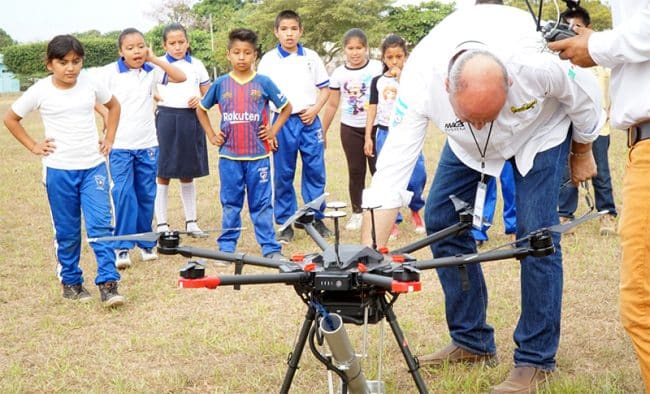Mosquito sterilization offers new opportunity to control chikungunya, dengue, and Zika

A technique that sterilizes male mosquitoes using radiation will soon be tested as part of global health efforts to control diseases such as chikungunya, dengue, and Zika.
The Sterile Insect Technique (SIT) is a form of insect birth control. The process involves rearing large quantities of sterilized male mosquitoes in dedicated facilities, and then releasing them to mate with females in the wild. As they do not produce any offspring, the insect population declines over time.
The Special Programme for Research and Training in Tropical Diseases (TDR) and the International Atomic Energy Agency (IAEA), in partnership with the Food and Agriculture Organization of the United Nations (FAO), and WHO have developed a guidance document for countries that have expressed interest in testing the Sterile Insect Technique (SIT) for Aedes mosquitoes.
Half the world at risk of dengue
“Half the world’s population is now at risk of dengue,” said Dr Soumya Swaminathan, WHO Chief Scientist. “And despite our best efforts, current efforts to control it are falling short. We desperately need new approaches and this initiative is both promising and exciting.”
In recent decades, the incidence of dengue has increased dramatically due to environmental changes, unregulated urbanization, transport and travel, and insufficient sustainable vector control tools and their application.
Dengue outbreaks are currently occurring in several countries, notably on the Indian sub-continent. Bangladesh is facing the worst outbreak of dengue since its first recorded epidemic in 2000. The South Asian nation has seen the number of cases rise to over 92,000 since January 2019, with daily admissions peaking at more than 1,500 new dengue patients in hospitals in recent weeks and is one of the countries to express interest in the Sterile Insect Technique.
Diseases transmitted by mosquitoes such as malaria, dengue, Zika, chikungunya, and yellow fever account for about 17% of all infectious diseases globally, claiming more than 700,000 lives each year, and inflicting suffering on many more. The 2015 outbreak of Zika in Brazil was linked to an increase in the number of babies being born with microcephaly.
New technique proved successful against insects that attack crops and livestock
The Sterile Insect Technique was first developed by the U.S. Department of Agriculture and has been used successfully to target insect pests that attack crops and livestock, such as the Mediterranean fruit fly and the New World screwworm fly. It is currently in use globally in the agriculture sector on six continents.
The guidance on using the technique to control diseases in humans recommends adopting a phased approach that allows time to test the efficacy of the sterilized insects. Epidemiological indicators monitor the impact of the method on disease-transmission. It also provides recommendations on mass production of the sterile mosquitoes, government and community engagement, measuring the impact of the technique, and assessing cost-effectiveness.
“Countries seriously affected by dengue and Zika have shown real interest in testing this technology as it can help suppress mosquitoes that are developing resistance to insecticides, which are also negatively impacting the environment,” said Florence Fouque, a scientist at TDR.
The collaborative effort includes plans to support three multi-country teams of research institutions, vector control agencies and public health stakeholders to test the Sterile Insect Technique against Aedes mosquitoes. “The use of the Sterile Insect Technique in the agriculture sector in the past 60 years has shown that it is a safe and effective method,” said Jérémy Bouyer, medical entomologist at the Joint FAO/IAEA Division of Nuclear Techniques in Food and Agriculture. “We are excited to collaborate with TDR and WHO to bring this technology to the health sector to fight human diseases.”
















